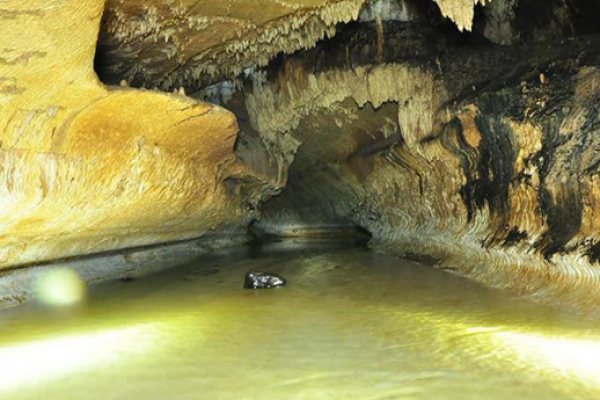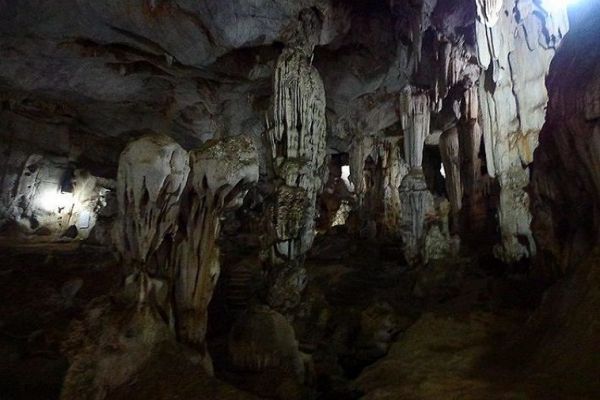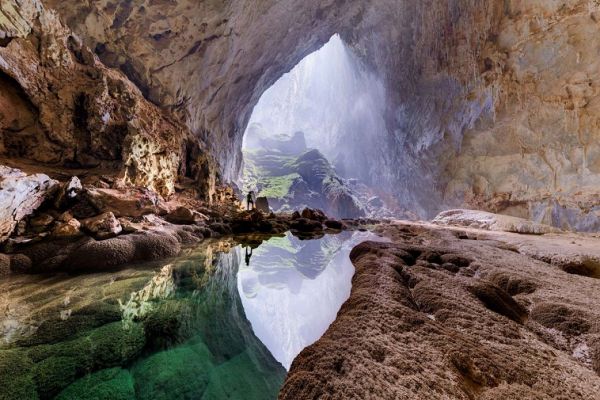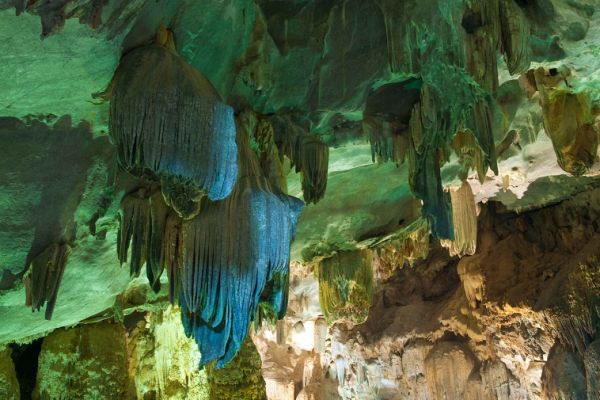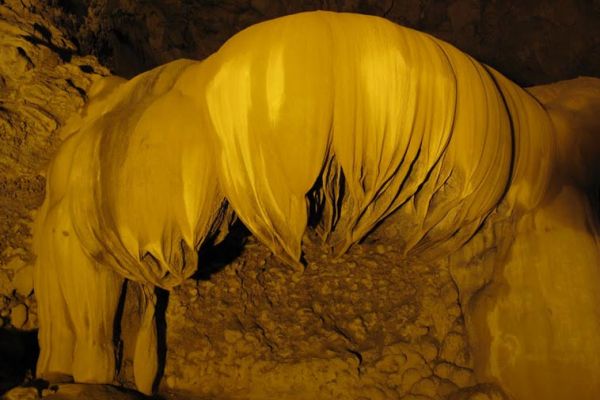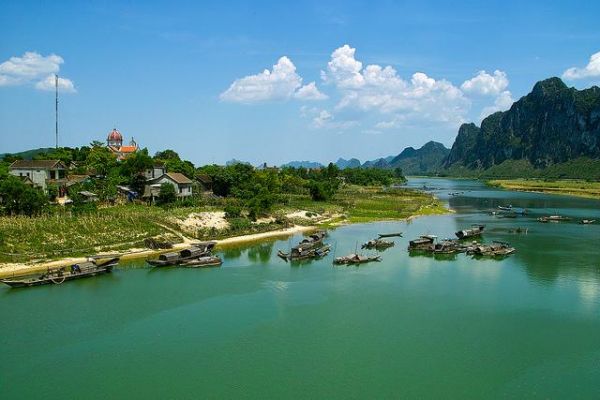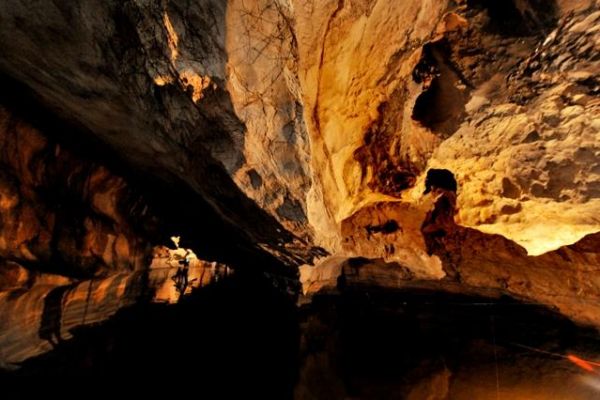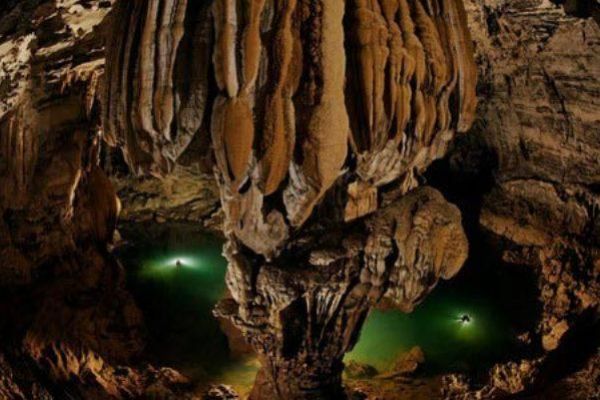1. Where is Son Doong Cave?
Son Doong is located within Phong Nha - Ke Bang National Park, a breathtakingly beautiful area of over 2,000 square kilometers, encompassing dense jungles, meandering rivers, and vast underground splendors.
Beyond the marvel of Son Doong itself, the national park is home to an extensive network of over 404 other Vietnamese caves waiting to be explored. Visitors can choose from a variety of cave tours, each catering to different fitness levels and interests. There are also opportunities to go on jungle treks, take boat rides, and connect with local communities.
2. How was Son Doong Cave in Vietnam discovered?

Formation: 2 to 5 million years ago, river water flowed through a limestone area buried along a fault and eroded it into a huge underground tunnel, where parts of the ceilings fell to form holes and become Son Doong's cave arch today.
Discovery: Son Doong was chanced on in 1991 by Ho Khanh, a local looking for a place to take shelter from the rain while going through the forest. But his role in its discovery did not stop there.
When the British Cave Royal Association (BCRA) came to Quang Binh in 2007, he reported his findings and accompanied them in looking for the cave. He could not remember its exact location but continued searching for it on his own. Eventually, he led BCRA's Howard and Deb Limbert to it in 2009.
>>> See more: Vietnam’s Son Doong Cave through U.S. photographer’s lens
3. How big is Son Doong Cave?
Son Doong's sheer size dwarfs almost everything around it! With its impressive length of nearly 9 kilometers and a staggering volume of approximately 38.5 million cubic meters, it rightfully holds the title of the largest cave in the world.
The cave's majestic dimensions continue to astonish, with its highest cave arch reaching an astonishing height of 243,84 meters and its maximum width expanding up to 150 meters. To put this into perspective, imagine fitting a 40-storey building in it and 15,000 Olympic swimming pools!
The enormity of Son Doong is further highlighted when comparing it to other notable caves in the vicinity. For example, En Cave, which is recognized as the third largest cave in the world, is a mere fraction of the size of Son Doong. Son Doong is around 5 times larger than En Cave and surpasses it in every dimension.
4. Unique features of Son Doong Cave
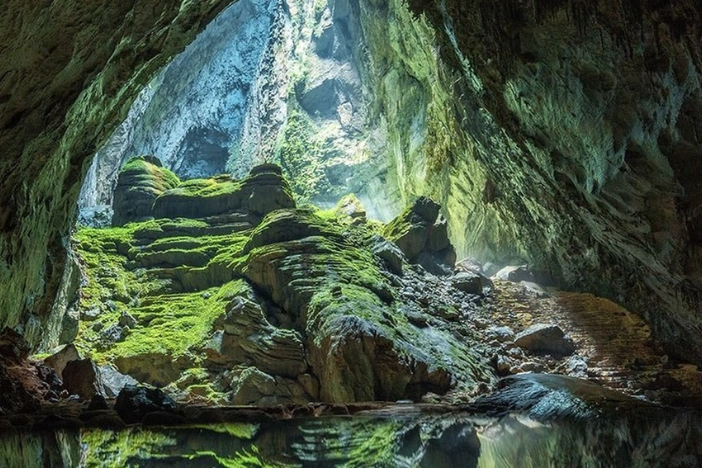
Unique microclimates: The cave's large size and different chambers create diverse microclimates that influence the distribution of organisms and contribute to the overall ecosystem. The varying levels of humidity, temperature, and light provide distinct niches for different forms of life to thrive.
Enormous stalagmite and stalactites: Part of Son Doong's allure comes from the enchanting stalagmite and stalactite system in the cave. Not only is it strikingly beautiful, but it also tells the story of the cave's formation, with droplets of mineral-rich water slowly accumulating over millions of years. With formations reaching 70 to 80 meters high, the stalagmites and stalactites in Son Doong are truly stupendous.
Breathtakingly diverse ecosystem: Son Doong is home to lush vegetation and unique flora and fauna. As you traverse the cave’s labyrinth, you will be able to witness nature thriving in some of the most unexpected places. It is both a humbling and awe-inspiring experience, reminding you of the powerful forces of nature and the resilience of life.
5. Remarkable world records of Son Doong Cave in Vietnam
Son Doong Cave in Vietnam holds an impressive array of remarkable world records, making it a globally recognized and acclaimed destination:
Guinness World Records: On April 30, 2013, Son Doong Cave was officially certified by the Guinness Book of World Records as the largest cave in the world.
- World Record Association and World Records Union: In addition to the Guinness World Records, Son Doong was acknowledged by the World Record Association and the World Records Union as the largest cave on Earth. These recognitions further reinforced its significance on an international level.
- UNESCO World Heritage Site: Son Doong's exceptional geological and ecological value led to its recognition as a UNESCO World Heritage Site. In 2003, Phong Nha - Ke Bang National Park, which includes Son Doong, was inscribed on the prestigious list, emphasizing the cave's importance in the context of global natural heritage.
Over the years, Son Doong also garnered other honors and accolades, strengthening its status as a world-renowned site:
- 2014: The New York Times listed Son Doong Cave as one of the 52 most attractive tourist destinations in the world.
- 2015: Good Morning America from ABC News broadcasted live from Son Doong, showcasing its beauty to a global audience.
- 2015: National Geographic glimpsed inside Son Doong's chambers through a 360-degree photo series.
- 2019: DJ Alan Walker chose Son Doong as the backdrop for his million-views music video on Youtube, "Alone P.II."
- 2020: Business Insider recognized Son Doong as one of the top 20 outstanding natural wonders in the world.
- April 14, 2022: Google Doodle paid homage to Son Doong Cave on its search page in 17 countries across the world.
Son Doong Cave stands as a testament to the awe-inspiring beauty and geological wonders of nature. Its vast size, unique ecosystems, and remarkable records make it a must-visit destination for adventurers and nature lovers alike. Exploring this extraordinary cave is an unforgettable experience that connects visitors to the heart of Vietnam's natural heritage.



